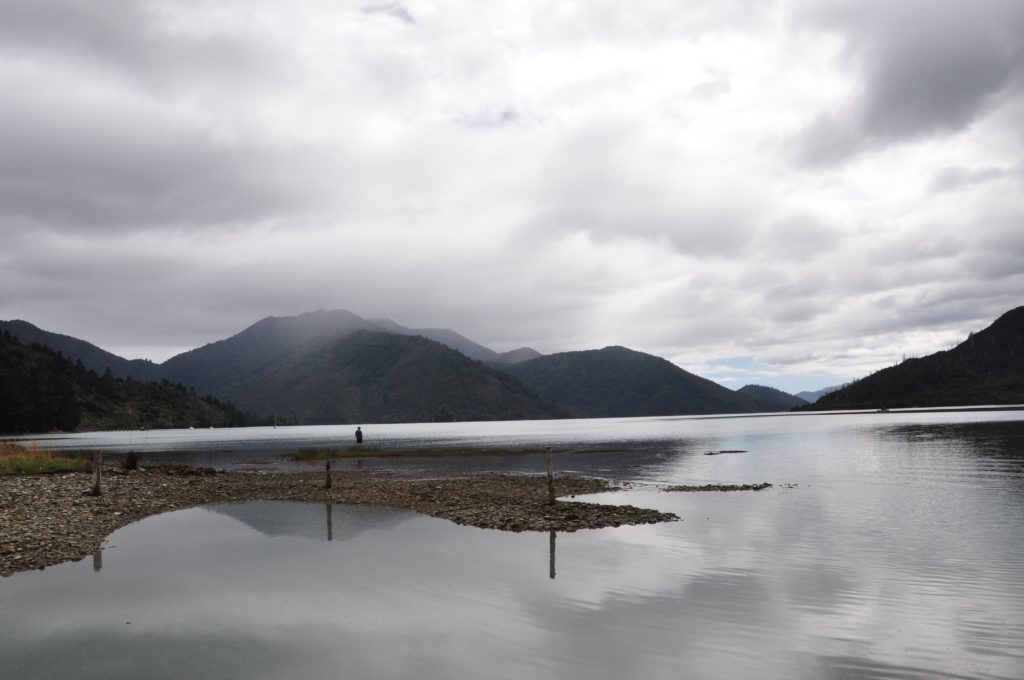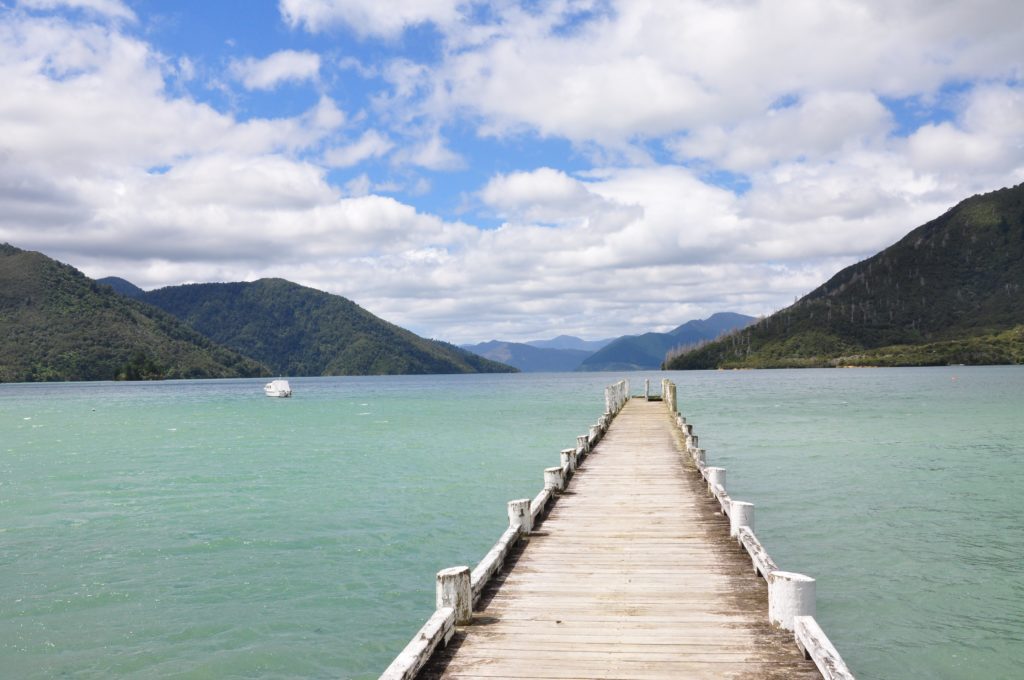Our second day on the Nydia Track was actually a rest day, and we planned to explore the area around Nydia Bay. After a leisurely breakfast we made our way down to the waterfront. Whilst Eric went hunting for the elusive flounder that could supposedly be caught in the bay (you can just about make him out in the picture below), the rest of us went over to the site of the historical wharf.

The few piles sticking out of the mudflats are all that remain of the wharf that was built here in 1906 by the Marlborough Timber Company. Timber from this area was shipped to the Port of Lyttelton to help build the city of Christchurch.

We followed the path of the old railway up thorough the forest and across several streams to the start of the old incline. Steam haulers on the tram line in this area would haul more than five million feet of timber a year over the steep hills.

Not much remains of the incline that was used to haul timber from this area, as in 1917 much of the equipment was moved to the Port Craig area in Southland. It was fascinating to see the site of the successful operations of the Marlborough Timber Company, as Eric and I had already visited the unsuccessful Port Craig back when we hiked the Hump Ridge Track at Christmas.

With the weather clearing, we made our way back down to the water for a picnic lunch before taking a stroll around the bay. With no road access to the bay, the area is only accessible by boat or foot. A ‘mail boat’ stops here once a week or so with supplies but most of the baches (holiday cottages) seemed to have a boat of some sort.

We made our way back around the bay to the lodge and after stopping for a while to admire all of the wildlife living in the tidal mudflats we settled in for dinner and an early night ready for our hike out the next day.
